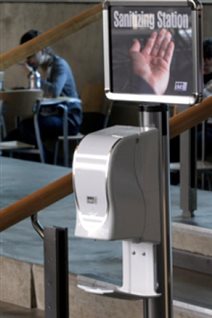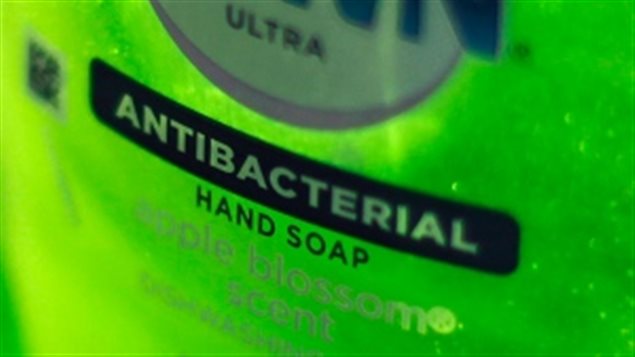A new report by The Canadian Environmental Law Association (CELA) has called for the banning of two very common chemicals used in a wide variety of household products.
Kathleen Cooper is the senior researcher with CELA
Listen
The two chemicals of concern are Triclosan and Triclocarban, now used as anti-bacterials in a very wide spectrum of consumer products.
Concern over the chemicals began as far back as the 1970’s when they were introduced as a surgical scrub. They have since become the most widely used antibacterial ingredients in consumer products worldwide.
Several studies have now found the chemicals to be toxic to humans, an endocrine disrupter, and are considered to be a contributing factor in the increase of resistant bacteria, the so-called superbugs.

The US state of Minnesota recently became the first jurisdiction to order triclosan to be phased out in consumer soaps by 2017.
CELA commissioned a test based on the “GreenScreen® for Safer Chemicals” analysis, a globally recognized tool for comparative chemical hazard assessment.
The comparison found that Triclosan was in the top category to be avoided entirely, while Triclocarban was in the second tier of the four level analysis. While not quite the same concern for humans, Triclocarban showed high toxicity to aquatic life.
CELA says that about 95% of these chemicals end up in our household waste water and are mostly not affected by municipal sewage treatments before being released into the environment.
The group is also concerned in that these chemicals are so widely included as anti-bacterials in a vast array of consumer products. Both the Federal Drug Administration in the US, and Canadian Health Agencies say they’re not really needed as a good washing with regular soap and water is just as effective against bacteria.
In 2012, researchers at Johns Hopkins Children’s Centre in the U.S. analyzed urine from 860 youths age 6 to 18 and found that children showing high levels of anti-bacterial chemicals such as triclosan also had roughly double the risk of food and environmental allergies.

University of B.C. microbiologist Brett Finlay said he isn’t surprised as the drive to kill off all bacteria removes the good bacteria as well.
At the time Finlay was quoted by CBC saying, “So if you don’t see them as a kid, later in life you react to them and you get things like allergies and asthma.”
Finlay said people should use anti-bacterials in strict moderation. “We call it the hygiene hypothesis – we just live too clean these days.”
About six per cent of North American children now have environmental or food allergies.
“All these auto-immune diseases, such as asthma and allergies and multiple sclerosis, inflammatory diseases, these are all going through the roof in our society,” said Finlay. “In places like Africa, where it’s still a more dirty world, if you will … it hasn’t changed.”
Kathleen Cooper of CELA says people should read labels to avoid cleaning and hygiene products with Triclosan and Triclocarban, and support efforts to have them banned in Canadian consumer products
CELA: Triclosan and the Great Lakes
GreenScreen Assessment report- pdf
HEALTH CANADA- 2012- assessment of triclosan
(CELA) Products which may contain one or both of the antibacterial chemicals
-
Liquid and hand soaps labelled antibacterial
-
eye and face make-up
-
body lotion
-
body wash/shower gel
-
facial cleanser
-
face cream/hand cream (barrier cream)
-
shampoo
-
toothpaste and mouthwash
-
fragrance
-
shaving preparation
-
foot gel
-
acne treatment
-
body spray
-
underarm deodorants
-
tanning products
-
cutting boards
-
non-prescription medication
-
detergent
-
clothing
-
carpet
-
paints
-
plastic
-
toys
-
school supplies
-
pacifiers
-
dishwashing/laundry products
-
institutional fabric softeners
-
toilet bowl deodorizer
-
textiles (including leather)
-
synthetic innersoles
-
rubber material
-
paper
-
used as a sanitizing agent in textile mills







For reasons beyond our control, and for an undetermined period of time, our comment section is now closed. However, our social networks remain open to your contributions.